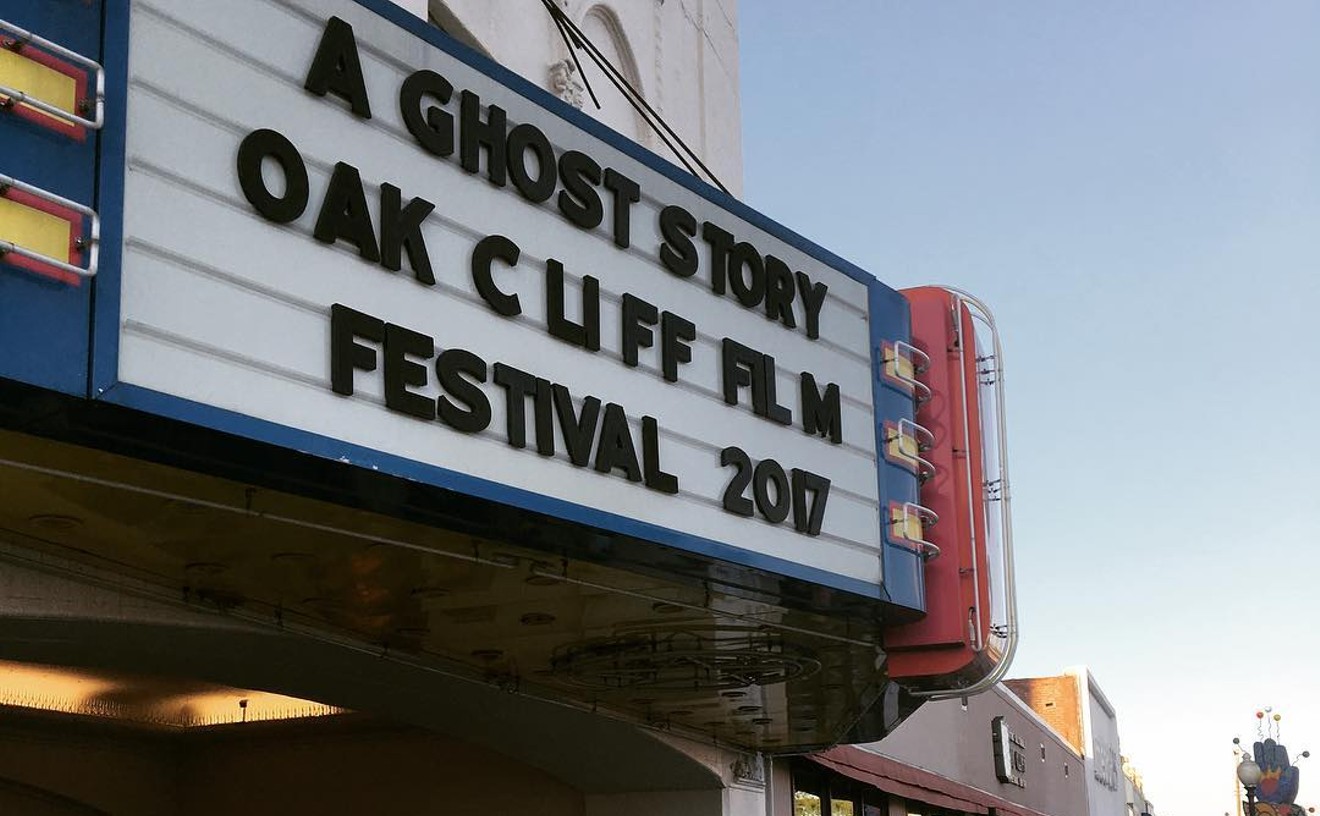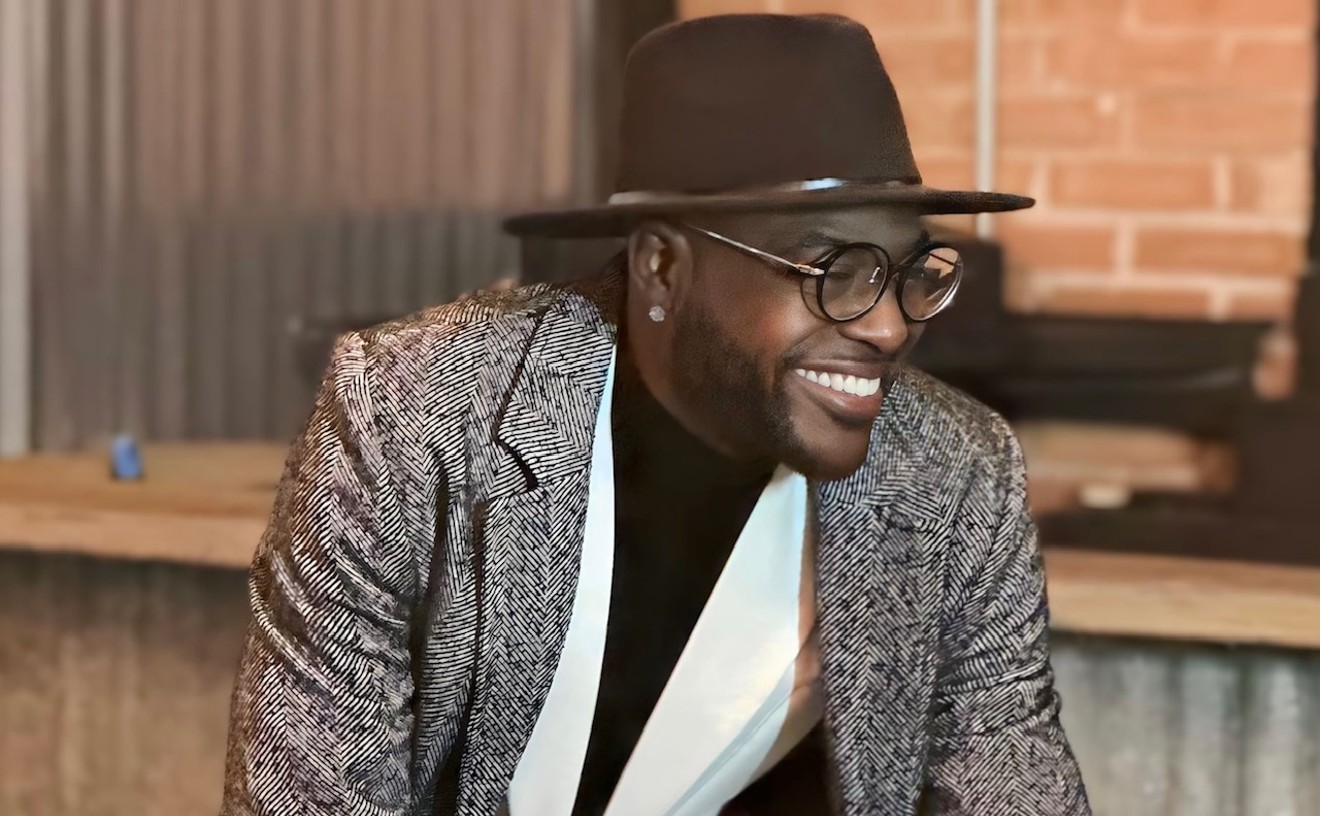Brace yourself for a time warp as you crack the spine of Fair Park Deco: Art and Architecture of the Texas Centennial Exposition. This isn't the Fair Park you've come to appreciate, though mostly ignore. As it was unveiled in 1936, the deco temple was sprawling and much more sordid, bizarre and brilliant then its current iteration. It was a geographical crystal ball, meant to unite those rural farmers, those Texans, and give them a glimpse into the future.
Jim Parsons and David Bush are the books' coauthors and photographers, and they'll present the new release at a lecture on Thursday, November 8 at 6 p.m. in the Hall of State. It's free to attend, and you'll get a rare peephole look back, as the fellas offer up pictures and original news reel footage from 1936.
We chatted with them, asking about the interesting curiosities they discovered through their historical stone-turning. It turns out, they found a lot. Here's our five favorites.
1.) The Midway had Strippers, Booze and Gambling The bastion of oversized plush animals that we see today was another area entirely during and after the Centennial. "There was a lot of nudity and girlie shows," said Parsons. "It would shock us today." At the time of its unveiling, he explains, Dallas was in the throes of financial disturbance. It was, like the rest of the country, shook up by the economic rattling of the Dust Bowl era.
The Midway wasn't the connected alleyway of erected tents and games that we now recognize. It was filled with semi-permanent structures, and those buildings housed more than just a ring toss. They were also go-tos for gambling, booze, strippers and other activities that repelled good, traditional southern morals.
Occasionally residents would complain, demanding that police run interference, which they did. But the area would quietly and quickly reopen. "It was making money in the middle of the Depression," explains Parsons. "So that's what was selling." The Midway didn't get fully cleaned up until the '50s or '60s.
2.) That Lady's Head and Body Don't Match If you've ever taken a look at the statue in front of what's now the Women's Museum, but was then the The Administration Building, you've probably noticed the Texas take on The Birth of Venus out front. Titled The Spirit of the Centennial, the piece was created by Raoul Josset and Jose Martin and features a graceful belle emerging from a cactus, rather than a clamshell. But the overall human form is actually modeled after two different women. The most identifiable area, the head, was designed after Blooming Grove Texas' own Georgia Carroll. She was a model and an actress who later went on to do some light roles on Broadway before marrying big band leader Kay Kyser. (She would later go on to sing in his band, Kay Kyser and His Kollege of Musical Knowledge.)
According to David Bush, the would-be starlet claimed that she couldn't bare to bare all, so a body double had to be brought in to complete the work. But whether or not it was Carroll's virtuous objection that caused the physical mash-up or not, is something not entirely certain. When digging through archival interviews, Bush and Parsons found one of the artists stating that Carroll's body simply "wasn't that good."
3.) Davy Crockett Went to War In a Suit When walking through the Great Hall, you're greeted by a mural of the battle of the Alamo. Just try to find Davy Crockett. You'll search indefinitely, scanning the scene for his signature backwoods garb. Then, you'll give up.
Here's what happened: Yale artist Eugene Savage was hired to oversee the murals in the Great Hall, which meant recreating the famous San Antonio battle as a visual narrative. But he wasn't from the south. He didn't know what Davy Crockett looked like, so he dug around until he found a picture to work off of.
What he scraped up showed the Alamo defender when he was serving as a congressman. For that reason, Savage painted Crockett into the battle scene wearing a very formal suit.
4.) What Impressed People Most? The Lights. Despite the multi-million dollar structures, air conditioning demos, works of art and other newfangled additions to the space, when people left the Centennial Exposition one thing was on everyone's tongues, according to historical pollsters: the lights.
Positioned behind the Hall of State were 24 searchlights scaffolding into a crowned fan shape. "They all moved and were different colors," says Parsons. "It sounds gaudy, but people loved it." The lights, he goes on to tell, were visible up to 20 miles away.
Considering most of the people who were visiting the fairgrounds were coming from rural farming communities with no electricity, the inspiring nature of those far-reaching beams makes a lot of sense.
5.) A Mural in the North Texas Room has a Dedication Page There's a fresco spanning a wall of the North Texas Room inside the State of Texas Building (now the Hall of State) that carries a secret love letter. It was painted by Arthur Starr Niendorff and features a large painted in plaster rendering of Old Man Texas, who was a local illustration favorite among Dallas Morning News readers of the time.
But look past the symbolic images of livestock, bank vaults and train/airplane hybrid and focus on the book in the lower right hand corner. It's filled with acknowledgment text, and was left behind as a thank you gift by the painting's author. It's a little love note, recognizing those who helped him get to where he was.
Learn more interesting footnotes of the area's history on Thursday, November 8 at 6 p.m. when Parsons and Bush reveal their book in Dallas. It's composed of more than 300 photos, from past and present.










